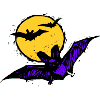Wildlife Disease and Zoonotics

Zoonotics and Wildlife Disease: Publications
ORCID IDs
http://orcid.org/0000-0003-3892-0251
Document Type
Article
Date of this Version
8-10-2017
Citation
Ryan S. Miller, Steven J. Sweeney, Chris Slootmaker, Daniel A. Grear, Paul A. Di Salvo, Deborah Kiser, Stephanie A. Shwiff. Nature Scientific Reports. Cross-species transmission potential between wild pigs, livestock, poultry, wildlife, and humans: implications for disease risk management of free-ranging swine in North America. Scientific Reports. 7(7821). 2017
Abstract
Cross-species disease transmission between wildlife, domestic animals and humans is an increasing threat to public and veterinary health. Wild pigs are increasingly a potential veterinary and public health threat. Here we investigate 84 pathogens and the host species most at risk for transmission with wild pigs using a network approach. We assess the risk to agricultural and human health by evaluating the status of these pathogens and the co-occurrence of wild pigs, agriculture and humans. We identified 34 (87%) OIE listed swine pathogens that cause clinical disease in livestock, poultry, wildlife, and humans. On average 73% of bacterial, 39% of viral, and 63% of parasitic pathogens caused clinical disease in other species. Non-porcine livestock in the family Bovidae shared the most pathogens with swine (82%). Only 49% of currently listed OIE domestic swine diseases had published wild pig surveillance studies. The co-occurrence of wild pigs and farms increased annually at a rate of 1.2% with as much as 57% of all farms and 77% of all agricultural animals co-occurring with wild pigs. The increasing co-occurrence of wild pigs with livestock and humans along with the large number of pathogens shared is a growing risk for cross-species transmission.


Comments
Open Access This article is licensed under a Creative Commons Attribution 4.0 International License